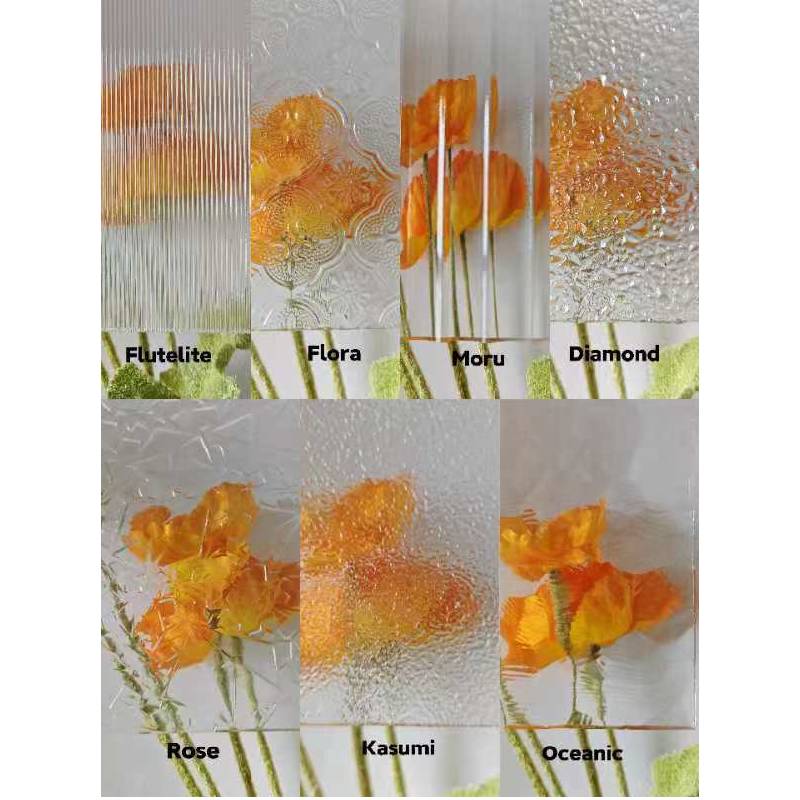

Clear Reflective Glass A Modern Architectural Marvel
In the realm of modern architecture, materials play a pivotal role in shaping aesthetics, functionality, and the overall experience of a built environment. Among these materials, clear reflective glass stands out as a transformative element that has redefined building facades and interior spaces. This innovative glass not only serves practical purposes but also enhances the visual appeal of structures, making it a favored choice for architects and designers worldwide.
The Essence of Clear Reflective Glass
Clear reflective glass is characterized by its ability to reflect light while maintaining clarity, allowing visibility from both inside and outside. This unique combination makes it a popular choice for high-rise buildings, office towers, and commercial spaces. The reflective quality of the glass plays a significant role in energy efficiency by reducing the need for artificial lighting. By reflecting sunlight, it helps to keep interiors brightly lit without excessive dependence on electric sources, thereby reducing energy consumption.
Additionally, clear reflective glass contributes to the thermal insulation of buildings. It can significantly lower cooling costs during hot months, as it minimizes heat transference. This energy efficiency not only benefits the environment but also aligns with the growing demand for sustainable architecture.
Aesthetic Appeal and Versatility
The aesthetic versatility of clear reflective glass allows architects to explore various design possibilities
. Its sleek, modern look can seamlessly blend with different architectural styles, ranging from contemporary skyscrapers to residential homes. The glass provides an elegant finish that elevates the overall design, making structures more visually appealing.Furthermore, reflective glass allows for the creation of dynamic visual experiences. The way it interacts with natural light changes throughout the day, offering different hues and reflections that can transform a building's appearance. In urban environments, this reflective quality can create a dynamic skyline, as the glass captures and mirrors surrounding buildings and natural landscapes, making the architecture an integral part of the local environment.

Challenges and Considerations
While clear reflective glass offers numerous benefits, it is not without its challenges. One of the significant concerns is glare, which can be problematic for both pedestrians and occupants in nearby buildings. During specific times of the day, the reflection of sunlight can produce uncomfortable brightness that may hinder visibility. Architects and designers must consider these factors and employ design strategies, such as strategic placement, shading devices, or the use of anti-glare coatings, to mitigate potential issues.
Another consideration is the maintenance and cleaning of reflective glass surfaces. Over time, dirt and environmental residue can accumulate, diminishing the glass's reflective quality. Regular cleaning is essential to preserve its aesthetic appeal and performance, which can be a logistical challenge for tall buildings or complex structures.
Innovative Applications
Recent advancements in glass technology have expanded the applications of clear reflective glass. Innovations such as smart glass allow for greater control over light and heat regulation. These smart solutions can change their properties in response to environmental conditions, further enhancing energy efficiency while providing comfort to occupants. Moreover, the incorporation of photovoltaic cells within reflective glass panels paves the way for self-sustaining buildings, turning facades into energy-generating surfaces.
In residential settings, clear reflective glass can be used to create a sense of openness and connection with the outdoors. Large glass walls can bring in natural light, providing unobstructed views of gardens or landscapes while maintaining privacy through reflection.
Conclusion
Clear reflective glass is not just a building material; it is an architectural element that embodies modernity, efficiency, and aesthetic elegance. As the world shifts towards sustainable design, the role of such materials will only increase, driving innovation and transforming the way we create and experience space. Whether in towering skyscrapers or cozy homes, clear reflective glass stands as a testament to the beauty and functionality that contemporary architecture strives for, reflecting not just light but the aspirations of our evolving built environment.